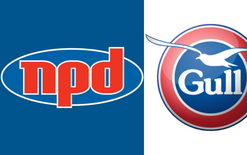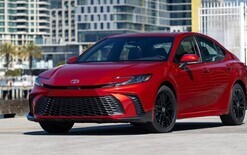Car price hikes avoided

The Motor Industry Association (MIA) has welcomed the government’s decision to introduce transitional financial relief and undertake a full review and overhaul of the clean car standard (CCS).
It says the changes restore balance, support real emissions progress, and address an economic and environmental problem that has become unsustainable for the market and consumers.
The CCS was designed to lower carbon dioxide (CO2) emissions by influencing the type and mix of vehicles crossing the border. It pushed the supply of EVs forward rapidly, but buyers haven’t shifted at the same pace so the gap has continued to widen.
For 2025, the standard’s settings expect around one-in-five new light passenger vehicles to be electric. Actual sales this year are closer to one-in-10. From 2026, the target tightens again to about one-in-four.
The MIA says importers cannot earn credits when customers aren’t buying the vehicles that create them, forcing many into costly credit purchases or penalties.
At $67.50 per gram of CO2, new-vehicle industry forecasts show compliance costs are likely to total around $125 million in 2025, rising to about $153m in 2026. None of this goes to the government or emissions-reduction initiatives. It circulates between companies and is ultimately transferred offshore.
“This became a costly compliance market rather than a policy that reduced emissions,” says Aimee Wiley, pictured, the MIA’s chief executive.
“Importers unable to earn enough credits have been drained financially, putting vehicle prices at risk and limiting the ability to invest in the technologies that genuinely lower emissions.”
Economic reality behind crisis
Consumers have continued to shift strongly toward hybrid technology since the clean car discount ended.
In terms of emissions reduction, hybrids sit between traditional petrol and diesel vehicles and zero-emissions models, says the MIA. They offer certainty, fuel savings and practical benefits, which is why they have become the dominant choice in the market.
However, the CCS is designed to drive a rapid shift towards models with zero and very low emissions. Under the current settings, many hybrids will attract penalties from 2026. With a large share of the market in the hybrid category and low uptake of EVs slated to continue, the gap between targets and real-world behaviour is widening.
Electric cars remain more expensive upfront, and concerns about total cost of ownership, charging availability, real-world range and technology mean many households and businesses are yet to readily adopt them.
The MIA adds that in a competitive market this is normal demand behaviour, and reflects the reality of household and business budgets. Regulation cannot force consumers to buy vehicles they don’t want or cannot afford.
“When policy pushes supply in one direction but demand doesn’t follow, strain becomes severe,” says Wiley. “Prices rise, choice shrinks, businesses face increasing costs and consumers ultimately carry the burden.
“That’s exactly what has been happening. Without intervention, prices would likely have risen sharply in the months ahead and many affordable models would have disappeared from the market while emissions remained largely unchanged.”
Decision ‘restores stability’
The government will temporarily cap CCS penalties for new imports at $15 per gram for two years to provide immediate financial relief and market stability while the policy is rebuilt.
Wiley says: “We aren’t stepping back from environmental goals. We are repairing a system that was costing New Zealand hundreds of millions of dollars without reducing emissions. This is climate action that will work.”
The MIA stresses a full two-year transition is essential because the first year allows the reset to be completed, while the second year provides time for legislative changes, consultation and industry preparation. New vehicles often have long lead times, so the sector needs certainty to plan and order appropriately.
“A shorter or rushed process would risk further disruption,” adds Wiley. “A two-year window is needed to rebuild a credible and workable clean vehicle standard.”
For consumers, the reset reduces the risk of sharp price hikes and helps preserve choice at a time of cost-of-living pressure. For businesses, it brings immediate relief from unsustainable compliance costs, and restores some confidence to plan and invest.
For climate progress, it protects the direction of travel while allowing the rebuild of a system that can deliver real emissions reductions.
Wiley says: “We support progress toward a cleaner fleet, but it must be achievable and grounded in real market behaviour. The direction remains toward reducing emissions, but the pathway must be workable.
“This approach protects consumers today, and gives importers the space needed to prepare for a new and improved system. It supports environmental progress and economic stability at the same time.”
The MIA plans to work closely with the government to design a “simpler and more effective clean vehicle standard, version two”.
The goal is a framework that remains ambitious in intent while being grounded in real-world demand, supporting customer choice and delivering measurable emissions cuts over time.
“We welcome government leadership in restoring balance and setting New Zealand up for genuine progress,” says Wiley. “We will continue placing industry expertise at the centre of decisions that shape the future of transport.”





